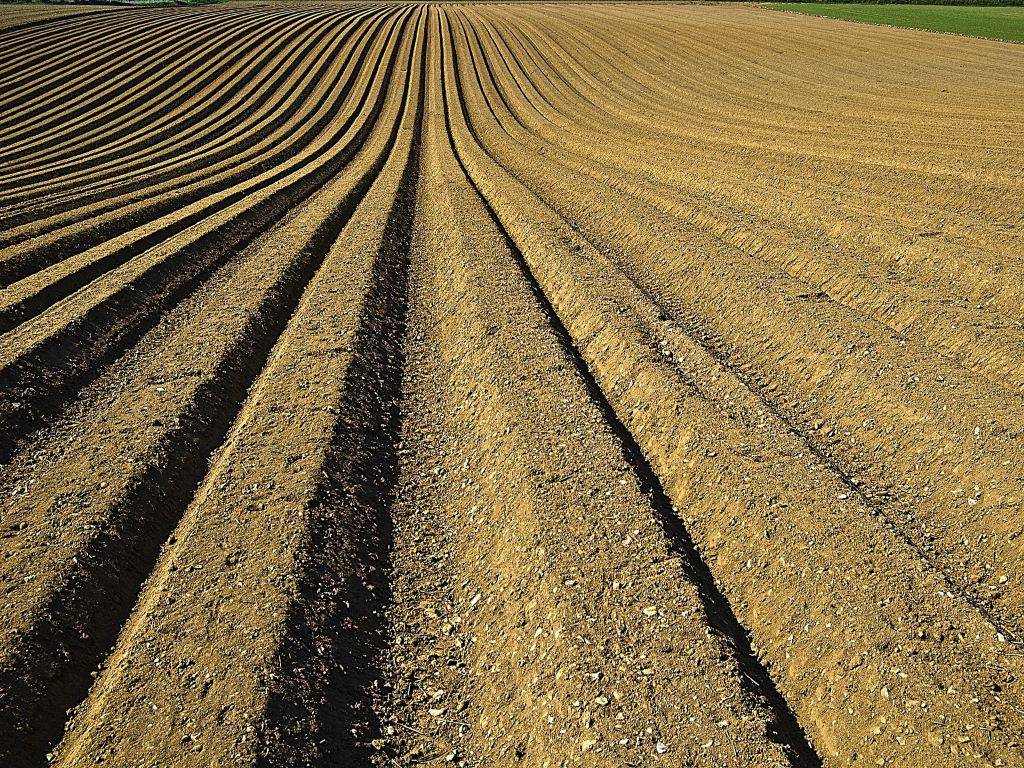
India has a range of soil types. Each soil type possesses a set of characteristics. Each one is suitable for a certain set of crops.
Here is a short glimpse of the soil types in India, their characteristics, and what crops can be grown in each soil.
1. Alluvial Soil
Found in:
Most of the delta areas of North India. It covers over 35% of total Indian land.
Characteristics:
Mix of sandy loam and clay soil. Quick draining in nature. Rich in humus (organic matter) and phosphoric acid. Poor in potash and nitrogen.
Suitable crops:
Cotton, wheat, sorghum, bajra, maize, barley, jute, tobacco, green and black gram, chickpea, pigeon pea, soybean, sesame, groundnut, linseed + any type of oilseed, fruit, and vegetable.
Know about two high oleic groundnut varieties.
Alluvium area of the Great Plain of India is geologically divided into 4 soils:
|
Soil Types in Alluvium plain |
Found in |
Characteristics |
Suitable crops |
|
Bhabar |
Bhabar belt runs 8-16 km across Shivalik Hills. Forms the North-most stretch of Indo-Gangetic Plain |
Highly porous soil. Lot of pebbles and rock debris |
Unsuitable for crop cultivation. Only trees with big, deep roots can grow. |
|
Terai |
Runs along the densely forested tract, 15-30 km south of Bhabar belt. |
The tract is marshy and ill-drained. Rich in N and organic matter. Poor in Phosphate. |
Wheat, jute, rice, sugarcane |
|
Bhangar |
Older alluvial belt across river beds, 30 m above flood plain. |
Dark clayey soil. A few meters down the bhangra terrace are “kankar,” which are lime nodules. |
Less suitable for agricultural crops. |
|
Khadar |
Newer alluvial belt across river beds. |
The most fertile soil of the Ganges. Sandy clay, loamy soil, less “kankary.” River floods deposit new alluvial layer every year. |
Sugarcane, wheat, rice, oilseeds |
2. Black Soil
Found in:
Deccan lava tract. This includes states of Gujarat, Madhya Pradesh, Maharashtra, Andhra Pradesh, Tamil Nadu, and Telangana. This soil type is prominent in river valley of rivers Narmada, Godavari, Tapi, and Krishna.
Characteristics:
These soils are formed when lava rocks weather away. Rich in magnesium, iron, aluminum, and lime. Poor in nitrogen, phosphorus, and organic matter. Black soils get sticky when fully wet. They develop cracks when fully dry. The soils attain black color due to deposits of humus and salts during their formation. They moisture excellently.
Suitable crops:
Cotton is the major crop. So, black soil is also called black cotton soil. Other crops include wheat, cereals, rice, jowar, sugarcane, linseed, sunflower, groundnut, tobacco, millets, citrus fruits, oilseed crops of all kinds, and vegetables.

3. Red and Yellow Soil
Found in:
Deccan plateau, Western Ghat, Orissa, and Chhattisgarh.
Characteristics:
The soils are red due to iron oxide in them. The soils form when metamorphic rocks weather away. Rich in potash. Somewhat acidic. Poor in nitrogen, magnesium, lime, phosphorus, and organic matter. Soils are sandy.
Suitable crops:
Groundnut, potato, maize/corn, rice, ragi, wheat, millets, pulses, sugarcane, oilseeds, and fruits like citrus, orange, mango, and vegetables.
4. Laterite Soil
Found in:
Madhya Pradesh, Kerala, Karnataka, Tamil Nadu, Assam, and Orissa.
Characteristics:
Acidic soils, rich in iron. They are used in the making of bricks due to high iron content. Poor in organic matter, calcium, nitrogen, and phosphate. Not very fertile.
Suitable crops:
Cotton, wheat, rice, pulses, rubber, tea, coffee, coconut, and cashews.
Do you know Kerala has one of the world’s most beautiful tea plantations?
5. Arid Soil
Found in:
Aravalli west.
Characteristics:
Sandy soils with low clay content. Poor in organic matter and moisture because arid regions are usually dry. Saline in nature with low nitrogen and high salt. Rich in plant food. Their color varies between red and brown.
Suitable crops:
Saline resistant and drought tolerant crops are suitable. Barley, maize, wheat, millets, cotton, and pulses.
6. Mountain and Forest Soil
Found in:
Himalayan area, Western and Eastern Ghats, and a few regions of the Peninsular Plateau.
Characteristics:
Acidic soil, rich in organic matter. Poor in lime, phosphorus, and potash. Good fertilization is required in these soils.
Suitable crops:
Wheat, barley, maize, tea, coffee, spices, tropical and temperate fruits.
Do you know five varieties of Indian coffee grown in these regions have attained GI tag?
7. Desert Soil
Found in:
Areas of Rajasthan, Rann of Kutch of Gujarat, adjoining regions of Haryana and Punjab, and coastal areas of Kerala, Tamil Nadu, and Orissa. It covers about 4% of the total Indian land.
Characteristics:
Dry and sandy soil with some quantity of nitrogen present in it.
Suitable crops:
Only drought tolerant crops are suitable. Two examples are barley and millet.
Apart from this, India also has alkaline and saline soils, which are deficit in nutrients and high in salt. Then there are marsh soils unsuitable for crop cultivation because of being too acidic. Peaty soils are rich in organic matter and salt, but poor in phosphate and potash. Peaty soil is mostly in Kerala state.











